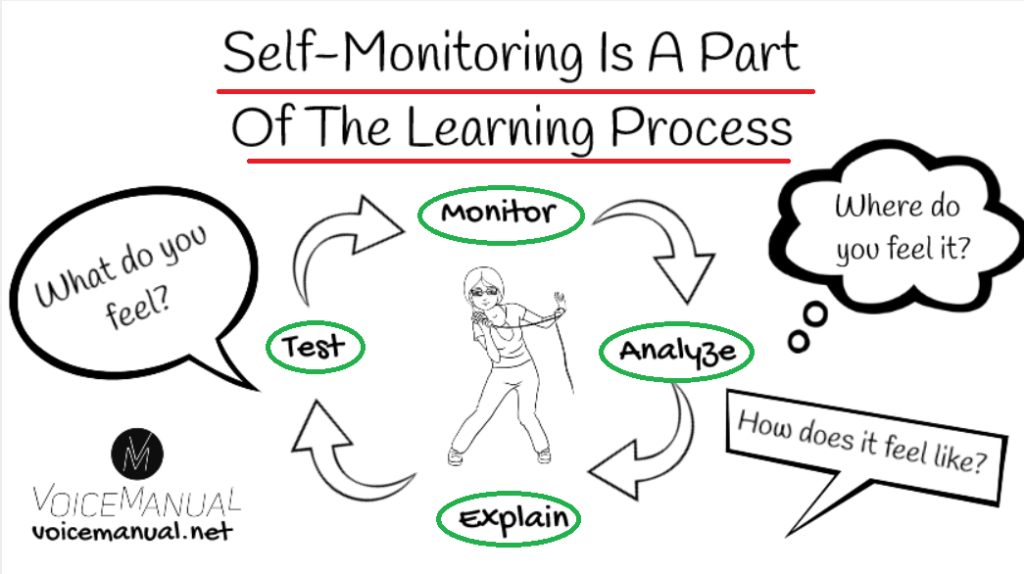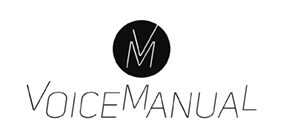We evaluate our own and other’s singing mostly by what we hear. Besides to listening, smart singers also learn to notice what they are doing in the body because it is the most efficient way to learn new things and on the other hand to strengthen the existing skills – and also to solve problems. Reflecting our own singing can be very challenging but it is also a skill that can be improved. We made a list of questions to help you train it.

Self-Monitoring The Body In Singing
Breathing organs are an essential part of the singing process. Therefore monitoring the muscles involved in breathing means monitoring the functions in the torso. In classical singing the concept of breath support is fundamental. In order to master that a singer must be well aware of the muscle work involved.
Monitor yourself when you feel that you are singing well. Then try singing something else that doesn’t go that well. Compare: what are you doing differently and where? How do you explain the differences to yourself? Discuss with your teacher for further understanding to find out what you are doing and what kinds of effects it has to your voice.
Questions To Help To Self-Monitor The Body When Singing
- When inhaling before singing, where do you feel the air flow ends in your body? (chest, abdominal area, upper back, lower back, shoulders, hips?)
- How much air do you take in before a) a short phrase, b) a long phrase, c) a fast tempo phrase with a lot of words or d) a long and calm phrase?
- Does the genre or your voice quality have an effect to your inhalation or your exhalation in singing?
- What happens to your singing voice if you inhale mostly to your
- chest?
- abdominal area?
- upper back?
- lower back?
- shoulders
- upper lungs?
- bottom of the belly?
- What do they feel like in the larynx?
- When singing do you feel the air flowing out freely or in a controlled manner or with a push?
- When singing, do the muscles work in your
- chest?
- sides?
- abdominal area?
- upper back?
- lower back?
- throat / neck?
- head?
- shoulders?
- legs?
- arms?
- nowhere?
- If you felt your muscles working how much effort was involved? Does it change during singing? To which direction did you feel the work moving?
- When singing, how free or relaxed are you
- in the neck area?
- in the chest area?
- in the abdominal area?
- in your back?
- How well can you move your body when singing? (Rolling shoulders? Walking? Dancing? Rotating your body? Moving your head? and so on. Does the movement affect your voice and, if yes, how?
- How is your posture a) from the front and b) from the side?
- Can you repeat singing the same again and again by repeating the sensations in your body?
- Sing something first softly and then loudly. How do the dynamic changes feel like in your body?

References:
Aura M., Laukkanen A-M., Ojala J., 2018. Laulunopettajien yleisimmin käyttämät laulupedagogiset käsitteet. Aineditaktiikka 2 (2), 38-70. DOI: 10.23988/ad.73222
Jordan-Kilkki P., Kauppinen E. & Korolainen-Viitasalo E. (toim.) Musiikkipedagogin käsikirja. Vuorovaikutus ja kohtaaminen musiikinopetuksessa. Opetushallitus. Tampere.
Juntunen M-L., Nikkanen H.M., Westerlund H. (toim.). Musiikkikasvattaja – Kohti reflektiivistä käytäntöä. Juva: PS-Kustannus.
Rauma J., 2019. Kehollisuus laulunopetuksessa. Sibelius-Akatemia.


3 thoughts on “Learn To Feel Singing Part 1: The Body”